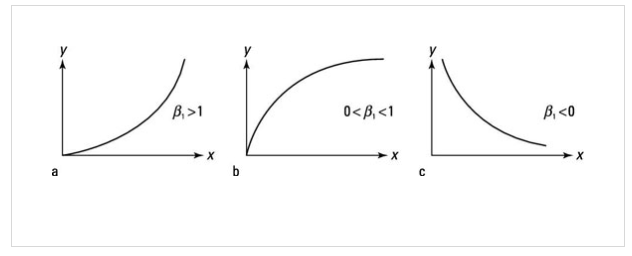Understanding log regression
log-log regression
- Using natural logs for variables on both sides of the OLS equation is called a log-log model. This model is handy when the relationship is non-linear in parameters.
-
In principle, any log transformation can be used to transform a model that;s a nonlinear in parameters into a linear one
- Consider a basic function: $Y_i = \alpha X_i^{\beta}$
- If you take the natural log of both sides: $ ln Y_i = ln \alpha + \beta ln X_i $
- $ln \alpha$ is treated as the intercept
- The model ends up with: $ln Y_i = {\beta}_0 + {\beta}_1 ln X_i $
- Interprete the coefficients:
- $\frac{\delta Y}{Y} = {\beta}_1 \frac{\delta X}{X}$
- The term on the right-hand side is the percentage change in $X$; and the term on the left-hand side is the percentage change in Y, so
- ${\beta}_1$ measures the elasticity

semi-log regression
- For the equation: $ ln Y_i = \alpha + \beta X_i $
- $\frac{\delta Y}{Y} = \delta X$
- The term on the right-hand side is the unit change in $X$; and the term on the left-hand side is the percentage change in Y,
- For the equation: $ Y_i = \alpha + \beta ln X_i $
- $\delta Y = \frac{\delta X}{X}$
- The term on the right-hand side is the percentage change in $X$; and the term on the left-hand side is the unit change in Y,
Marginal effects
- However, the percentage change ((semi-)elasticity) can only capture the correlation between $X$ and $Y$. It can’t represent the importance of indicators
- If we want to measure the importance, The elasticity should be transformed into marginal impacts
- $Margin = X * elasticity$
